 Escape Velocity is the fifth release in the Riffdisc series that Nick began in 2006. As he explained to Jeff Fitzgerald in Aural Innovations #42, the goal of the series, “is that each release has a slightly different focus in regards to lyrical approach and musical style. This came about due to the fact that some people only like the heavy fuzz psych, some like the etheric acoustic style, and some like the cosmic space rock and the experimental pieces. The previous releases contained all these elements at once depending on the song. My concept for the Riffdisc series was to separate and expand each element a little more by focusing each release on one of these characteristics and still maintain my musical identity.”
Escape Velocity is the fifth release in the Riffdisc series that Nick began in 2006. As he explained to Jeff Fitzgerald in Aural Innovations #42, the goal of the series, “is that each release has a slightly different focus in regards to lyrical approach and musical style. This came about due to the fact that some people only like the heavy fuzz psych, some like the etheric acoustic style, and some like the cosmic space rock and the experimental pieces. The previous releases contained all these elements at once depending on the song. My concept for the Riffdisc series was to separate and expand each element a little more by focusing each release on one of these characteristics and still maintain my musical identity.”
Here’s a quick recap: First was Magick Museum, which compiled Nick’s psych rockers from the 1990s. Next was The World’s Alive, credited to Nick Riff’s Freak Element, an album recorded in 1999 but not released until 2008. Then Nick embarked on a string of albums featuring new recordings. Photon Shift included what were some of Nick’s most overtly space rock songs to date. It was accompanied by an EP of duo performances with Nick on acoustic guitar and vocals and Peter Platten on synths and vocals. It consisted largely of dreamy folk-psych songs with spacey electronic treatments. And last year’s The Universe Is Mental was the most off-the-beaten-Riff-path of Nick’s albums yet, being a mostly instrumental set of exploratory space rock/psychedelic excursions.
Which brings us to Escape Velocity, the final installment in the Riffdisc series. The album showcases Nick as singer-songwriter front and center, but with heavy doses of the inter-galactic psychedelic proghead that dwells within.
The album opens with Missing Time, which starts off as a steady grooving rock song. Then at the 2 minute mark Nick goes into a spacey-dreamy transitional bit, surrounded by bubbling alien electronics, and swings back and forth between these contrasting themes. Crazy Horse is one of several analogies referenced in the promo sheet and there’s a solo later in the song that has a Neil Young vibe to it. It’s a solid opening track that’s part cosmic folk-psych and part singer-songwriter rock ‘n roll. Infinity is next and includes interesting, contrasting thematic shifts like Missing Time. On this song Nick transitions between piano and acoustic guitar driven psychedelic groove rock and lulling spacey segments. I especially like the section with the blend of orchestral soundscape atmospherics, lulling acoustic guitar, light alien electronics, and a gorgeous piano melody that makes for a hypnotic psych-prog blend. This is followed by Psychic Blues, which cruises along at a bouncy rhythmic pace that sounds pretty cool along with the acoustic guitar and organ, and Nick keeps things spaced out by working in colorful space electronics.
Too Much To Know kicks off with a somewhat tribal percussion groove, quickly adding acoustic guitar and proggy keyboards. Nick’s slightly efx’d warbling vocals are trippy, and I like the combination of acoustic guitar, 60s styled high pitches organ melody, dark mellotronic keys and sundry other effects. Near the end Nick goes into deep space with a slow efx’d guitar solo, played within a bubbling psychedelic cauldron of atmospherics and effects. Side Effects is a barroom style rock ‘n roller with sassy saxophone leads. But Nick can’t resist infusing the music with freaked out space rock effects, which get pretty intense near the end, blurring the line between pub rock swing and lysergic fun. I love it. Radiant Beings is the shortest song of the set, being a robotic whimsical rocker.
The title track features down ‘n dirty acoustic guitar riffage combined with heavy bleepy blurpy spaced out electronic effects. But it’s also got dreamy drifty melodic psychedelic segments with orchestral atmospherics that add a heavenly vibe to the music. And for the grand finale we’re treated to a balls-to-the-walls dual acid guitar freakout jam. The album closes with Open Mind, one of the most uplifting songs of the set, with head boppin’ melodic hooks that will put a smile on your face. It’s full band, led by acoustic guitar plus orchestration, and a bouncy groove like the best 60s pop. But after about 4 minutes Nick seriously shifts gears, creating a dark and ominous space-prog rumbling, like an alien force is gearing up for attack. It just keeps pounding away, and the wait for what’s to come is downright nerve-wracking. Yet there’s no explosion, no peak… it just quickly lightens and fades… and that’s the end.
The promo sheet describes “psych-folk-prog songwriting” and I’d say that’s a great description of what this album is about. At the core is Nick Riff the singer-songwriter, though this minstrel has a penchant for all things psychedelic and a proghead’s resistance to staying in any one place for very long. The songs are accessible, and Nick is a talented songwriter, yet the music is performed, arranged and recorded in the true spirit of adventure and will nicely satisfy any space-psych hunger. I’ll add that any Nick Riff album holds it own as a stand-alone, and if you look to the Aural Innovations alpha index you’ll see we’ve reviewed all his albums. But I also feel that Nick is an artist who listeners need more than one of his albums to get a real feel for what he’s about, and I see on his web site that the CDs are very reasonably priced so space cadets can affordably take the plunge.
For more information you can visit the Nick Riff web site at: http://www.nickriff.com
Reviewed by Jerry Kranitz
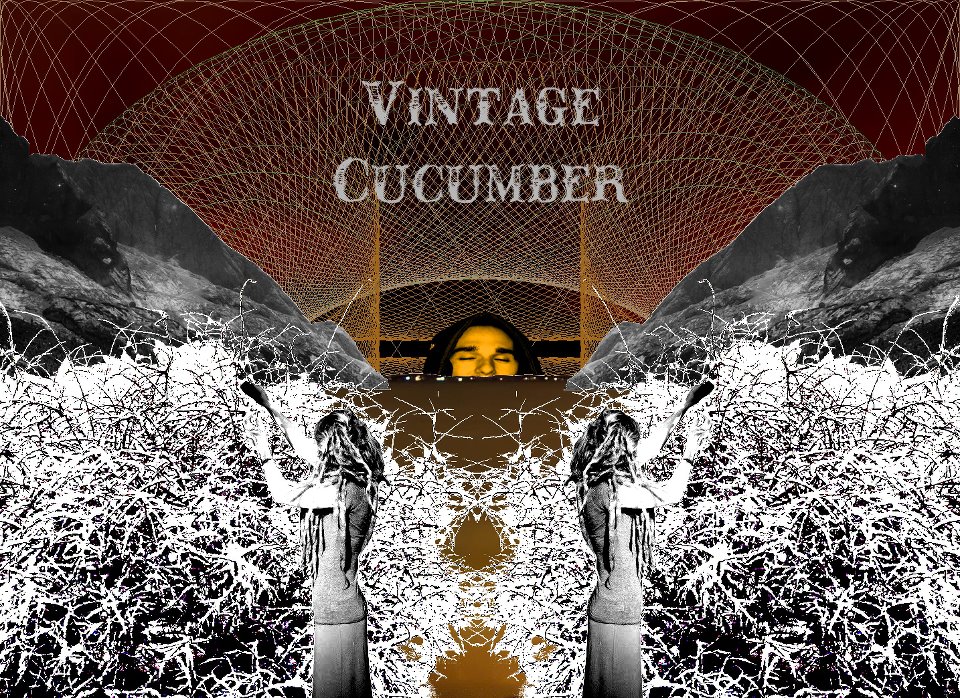 Vintage Cucumber is a solo project from German musician Johannes Schulz, who on this 9-track album plays guitar, bass, drums, synth, effects and voices.
Vintage Cucumber is a solo project from German musician Johannes Schulz, who on this 9-track album plays guitar, bass, drums, synth, effects and voices.
 In 2012 Columbus, Ohio based EYE released their first LP – Center Of The Sun – on Kemado Records, which to my ears was the best early 70s influenced slab of Space-Psych-Prog-Hard Rock released that year (
In 2012 Columbus, Ohio based EYE released their first LP – Center Of The Sun – on Kemado Records, which to my ears was the best early 70s influenced slab of Space-Psych-Prog-Hard Rock released that year (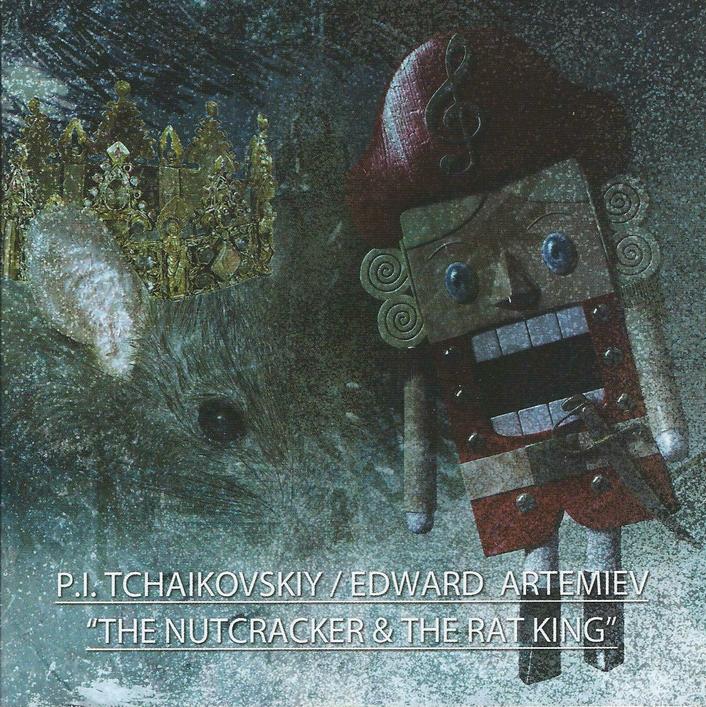 Written in 1816 by E.T.A. Hoffmann, The Nutcracker and the Mouse King was famously turned into a ballet composed by P.I. Tchailovsky in 1892. In 2010, a film titled The Nutcracker in 3D was released, directed by Andrei Konchalovsky and scored by Russian musician, composer, and electronic avant-garde pioneer Edward Artemiev.
Written in 1816 by E.T.A. Hoffmann, The Nutcracker and the Mouse King was famously turned into a ballet composed by P.I. Tchailovsky in 1892. In 2010, a film titled The Nutcracker in 3D was released, directed by Andrei Konchalovsky and scored by Russian musician, composer, and electronic avant-garde pioneer Edward Artemiev.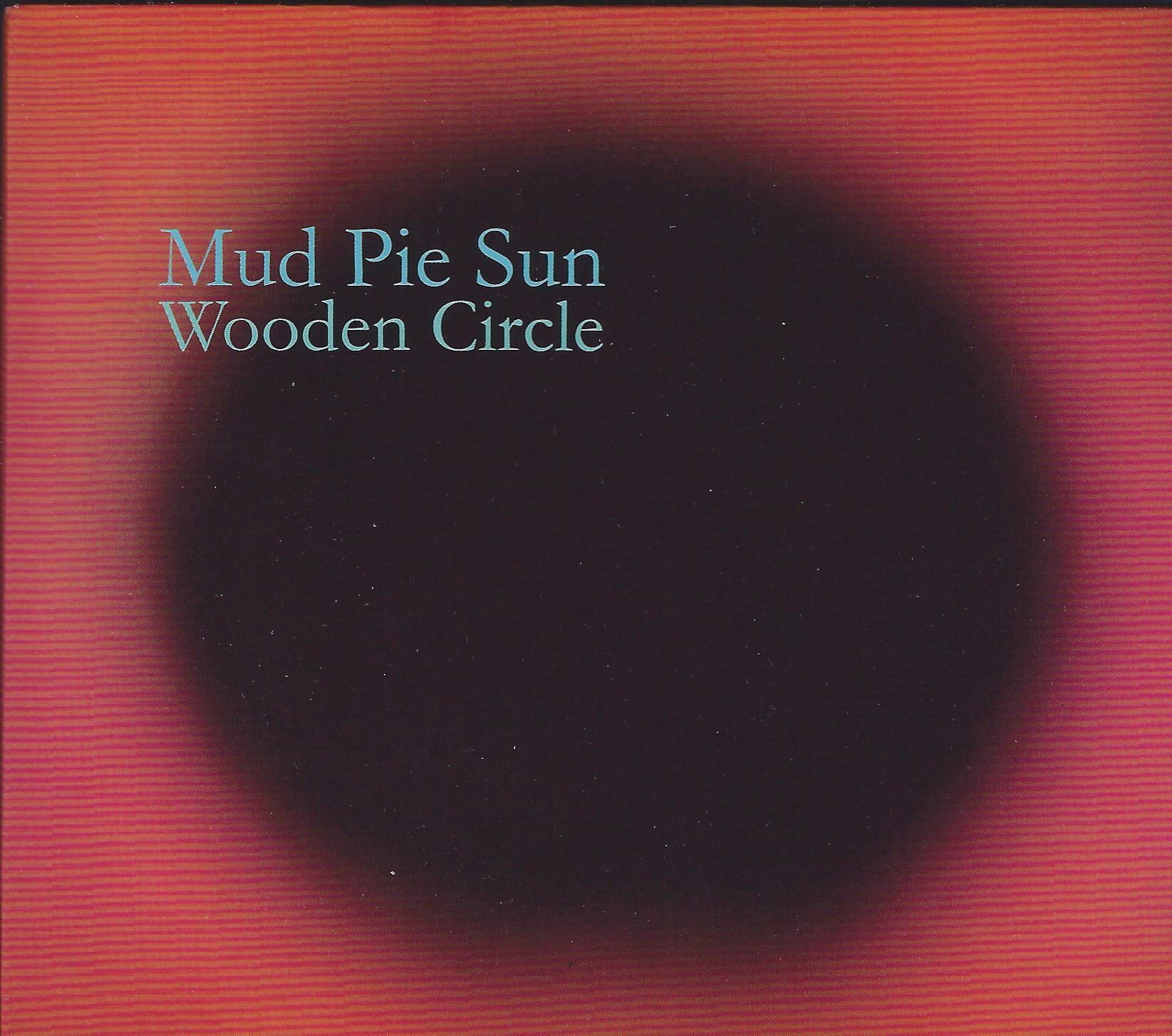 Mud Pie Sun are a two piece band consisting of Steven Pitcherella and Tom Quinn. Their music could be loosely termed as psychedelic, though a stronger sense of melancholy and warm reminiscence carries through their music giving it a somewhat more human and less psychoactive quality that makes it instantly endearing.
Mud Pie Sun are a two piece band consisting of Steven Pitcherella and Tom Quinn. Their music could be loosely termed as psychedelic, though a stronger sense of melancholy and warm reminiscence carries through their music giving it a somewhat more human and less psychoactive quality that makes it instantly endearing. New York City based Brian Wilson Shock Treatment (BWST) have been cranking out raucous psychedelic garage rock for nearly a decade now. Operation Sun Probe is their latest and for this outing the band consists of Brian X. Rose on bass, guitar and vocals, Mr. StarryNight (aka Scott Prato) on lead guitar, analog synth and vocals, Mark McClemens on drums, and Bonnie Kane on sax, flute and electronics. Aural Innovations review followers will recall the Big Plastic Finger review I posted yesterday. Well note that Scott, Bonnie and Mark are in both bands. A talented and creative bunch indeed.
New York City based Brian Wilson Shock Treatment (BWST) have been cranking out raucous psychedelic garage rock for nearly a decade now. Operation Sun Probe is their latest and for this outing the band consists of Brian X. Rose on bass, guitar and vocals, Mr. StarryNight (aka Scott Prato) on lead guitar, analog synth and vocals, Mark McClemens on drums, and Bonnie Kane on sax, flute and electronics. Aural Innovations review followers will recall the Big Plastic Finger review I posted yesterday. Well note that Scott, Bonnie and Mark are in both bands. A talented and creative bunch indeed. Big Plastic Finger is the New York City based quartet of Bonnie Kane on saxophone, flute and electronics, Scott Prato on guitar and electronics, Brian McCorkle on bass, vocals and electronics, and Mark McClemens on drums. I had previously known of Mark from his time in the late great space rock band Born to Go. And Bonnie and Scott have been in a laundry list of bands that occupy virtually every point on the psychedelic-space rock-garage-jazz spectrum, including The Brian Wilson Shock Treatment, who also have a new album out (review posted shortly after this one). I have fond memories (over a decade ago now) of seeing Born to Go at the old Strange Daze Space Rock festivals, as well as Bonnie performing there with W.O.O. Revelator, and Bonnie and Scott with World Of Tomorrow.
Big Plastic Finger is the New York City based quartet of Bonnie Kane on saxophone, flute and electronics, Scott Prato on guitar and electronics, Brian McCorkle on bass, vocals and electronics, and Mark McClemens on drums. I had previously known of Mark from his time in the late great space rock band Born to Go. And Bonnie and Scott have been in a laundry list of bands that occupy virtually every point on the psychedelic-space rock-garage-jazz spectrum, including The Brian Wilson Shock Treatment, who also have a new album out (review posted shortly after this one). I have fond memories (over a decade ago now) of seeing Born to Go at the old Strange Daze Space Rock festivals, as well as Bonnie performing there with W.O.O. Revelator, and Bonnie and Scott with World Of Tomorrow. Escape Velocity is the fifth release in the Riffdisc series that Nick began in 2006. As he explained to Jeff Fitzgerald in Aural Innovations #42, the goal of the series, “is that each release has a slightly different focus in regards to lyrical approach and musical style. This came about due to the fact that some people only like the heavy fuzz psych, some like the etheric acoustic style, and some like the cosmic space rock and the experimental pieces. The previous releases contained all these elements at once depending on the song. My concept for the Riffdisc series was to separate and expand each element a little more by focusing each release on one of these characteristics and still maintain my musical identity.”
Escape Velocity is the fifth release in the Riffdisc series that Nick began in 2006. As he explained to Jeff Fitzgerald in Aural Innovations #42, the goal of the series, “is that each release has a slightly different focus in regards to lyrical approach and musical style. This came about due to the fact that some people only like the heavy fuzz psych, some like the etheric acoustic style, and some like the cosmic space rock and the experimental pieces. The previous releases contained all these elements at once depending on the song. My concept for the Riffdisc series was to separate and expand each element a little more by focusing each release on one of these characteristics and still maintain my musical identity.”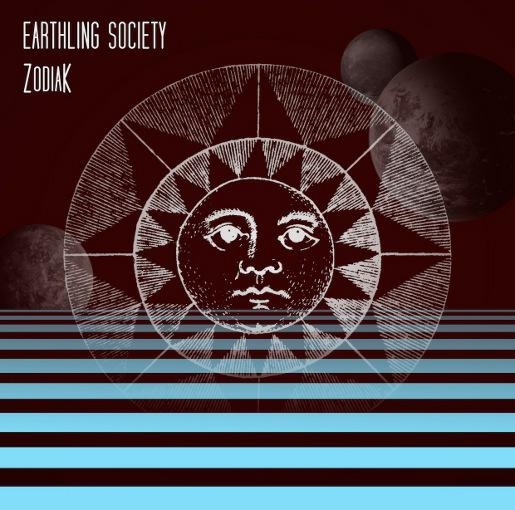 Earthling Society return with their 7th studio album, ZodiaK, a new vinyl only release (it is scheduled to come out in CD format with two bonus tracks sometime in the first half of 2013). Earthling Society have continued to evolve throughout their career, changing directions on almost every album but still retaining a certain core sound that is all their own, and ZodiaK is no exception.
Earthling Society return with their 7th studio album, ZodiaK, a new vinyl only release (it is scheduled to come out in CD format with two bonus tracks sometime in the first half of 2013). Earthling Society have continued to evolve throughout their career, changing directions on almost every album but still retaining a certain core sound that is all their own, and ZodiaK is no exception. Ptolem are an electronic duo from Geneva, Switzerland, which employs ambient and occasionally bass-heavy beats on this, their second album following 2007’s The Almagest. All The Jewels of This Dead Sea contains twelve instrumental tracks of mainly electronic music, with spacey titles like Submerged Neurotic Continents and Searching for a Reborn Sun. Francesco Raeli and Patrick Brocca do not list the electronic equipment used on this recording, but do make room for guest cellist and guitarists on several tracks.
Ptolem are an electronic duo from Geneva, Switzerland, which employs ambient and occasionally bass-heavy beats on this, their second album following 2007’s The Almagest. All The Jewels of This Dead Sea contains twelve instrumental tracks of mainly electronic music, with spacey titles like Submerged Neurotic Continents and Searching for a Reborn Sun. Francesco Raeli and Patrick Brocca do not list the electronic equipment used on this recording, but do make room for guest cellist and guitarists on several tracks. 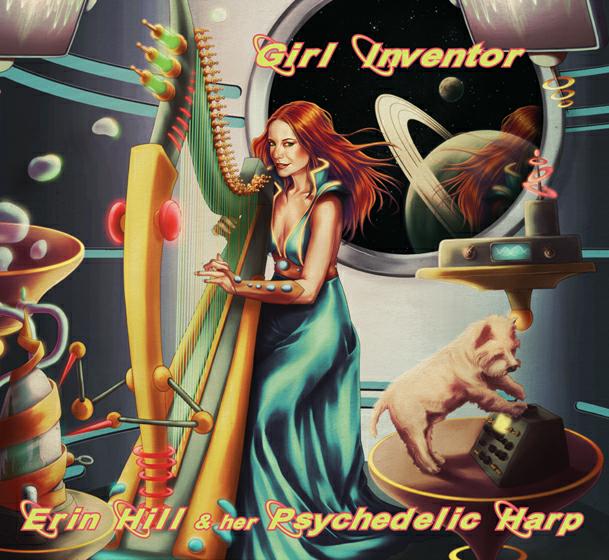 The standard process for new submissions here at Aural Innovations headquarters is that if I’m unfamiliar with the artist it takes its place in the queue and I get to it as quickly as possible. But the name Erin Hill & her Psychedelic harp along with the cover art aroused my curiosity, and when I spotted the “pop, opera, celtic, psychedelic, sci-fi” description on Erin’s business card, I had to hear this right away.
The standard process for new submissions here at Aural Innovations headquarters is that if I’m unfamiliar with the artist it takes its place in the queue and I get to it as quickly as possible. But the name Erin Hill & her Psychedelic harp along with the cover art aroused my curiosity, and when I spotted the “pop, opera, celtic, psychedelic, sci-fi” description on Erin’s business card, I had to hear this right away.